What to do if my Amana AVZC18 compressor fails?
- MMadison OsbornAug 18, 2025
If the compressor in your Amana Heat Pump fails, the suggested solution is to replace it.
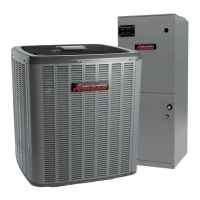
What to do if my Amana AVZC18 compressor fails?
If the compressor in your Amana Heat Pump fails, the suggested solution is to replace it.
How to fix pressure sensor failure in Amana Heat Pump?
If the pressure sensor fails in your Amana Heat Pump, you should replace it.
What to do if the filter-dryer is blocked in my Amana Heat Pump?
If the filter-dryer in your Amana Heat Pump is blocked, you should inspect it and replace it.
How to fix discharge temp sensor failure in Amana AVZC18?
If the discharge temperature sensor fails in your Amana Heat Pump, you should replace it.
What to do if suction temp sensor fails in Amana AVZC18?
If the suction temperature sensor fails in your Amana Heat Pump, replace it.
How to fix OD EEV failure in Amana Heat Pump?
If the outdoor electronic expansion valve (OD EEV) fails in your Amana Heat Pump, replace it.
How to fix ID EEV failure in Amana Heat Pump?
If the indoor electronic expansion valve (ID EEV) fails in your Amana Heat Pump, replace it.
What to do if OD EEV coil fails in Amana AVZC18?
If the outdoor expansion valve coil (OD EEV coil) fails in your Amana Heat Pump, replace it.
What to do if ID EEV coil fails in Amana AVZC18?
If the indoor expansion valve coil (ID EEV coil) fails in your Amana Heat Pump, replace it.
What to do when ambient temp sensor fails in Amana AVZC18 Heat Pump?
If the ambient temperature sensor fails in your Amana Heat Pump, replace it.
Explanation of model number coding.
Details on AVPEC accessories and installation.
Describes the function of the outdoor condensing unit.
Explains the cooling cycle of the heat pump system.
Explains the heating cycle of the heat pump system.
Describes the defrost cycle operation and control.
How to enable/disable and configure Boost Mode.
How to configure and operate the dehumidification feature.
Detailed diagram and explanation of the cooling cycle.
Table to diagnose heating issues based on system parameters.
Table to diagnose cooling issues based on system parameters.
Procedures for checking unit voltage.
Visual inspection and continuity check of wiring.
How to check thermostat and its wiring.
Overview of the CTK04 ComfortNet thermostat system.
Wiring details for the CTK04 thermostat system.
Wiring diagrams for system connections.
Explanation of thermostat menu navigation.
Procedure for performing the initial system start-up test.
Steps to set the thermostat for system charging.
Procedure to initiate and terminate charge mode.
How to adjust the maximum compressor speed via thermostat.
Procedure to adjust indoor airflow settings.
Adjusting airflow settings for cooling mode.
Configuring airflow profile, delays, and defrost settings.
How to manually initiate a defrost cycle.
Procedure to pump down the system refrigerant.
Using the 7-segment display for pump down operations.
How to view system operational status and parameters.
Setting outdoor temperature lockout parameters.
Testing the transformer and control circuit functionality.
How to test the high pressure control switch.
Testing pressure sensors for system operation.
Safety warnings and procedures for compressor checks.
Testing compressor winding resistance.
Performing ground continuity tests on the compressor.
Testing temperature sensors and EEV coil resistance.
Description and operation of the AVPEC heater control.
Testing heater limit controls for electric heaters.
Testing heater elements for continuity.
Information on optional electric heaters and their installation.
Checking heater limit controls for proper operation.
Testing the fuse link for optional electric heaters.
Essential practices for refrigerant system repair.
Procedures for leak testing refrigeration systems.
Step-by-step guide for system evacuation.
Proper procedures for charging the refrigeration system.
How to check compressor efficiency.
Procedures for checking and adjusting subcooling.
Identifying and removing non-condensables from the system.
Diagnosing and addressing compressor burnout issues.
Importance of proper refrigerant piping installation.
Installation guidelines for outdoor units above indoor units.
Installation guidelines for outdoor units below indoor units.
Understanding duct static pressures and coil drop.
Measuring external static pressure for air handlers.
Measuring static pressure drop across coils.
Troubleshooting specific issues within the indoor unit.
Safety precautions for handling electronic components.
Chart for interpreting unit diagnostic codes.
Procedure to recall and view system fault codes.
Table of error codes and their descriptions/messages.
Overview of advanced user menu options.
Accessing and clearing fault history.
Viewing equipment model and serial number.
Configuring system settings like humidifier, heater kit, and airflow.
Displaying current system operational status and parameters.
Understanding the 7-segment display for status and errors.
Introduction to the 2-digit mode display on the PCB.
Explanation of the display button functions.
Navigating through recorded fault codes.
Table of indoor unit error codes, causes, and corrective actions.
Troubleshooting guide for outdoor unit issues.
Overview of advanced menus for system monitoring.
Options for system setup and configuration.
Procedures for running system verification and defrost tests.
Procedures for system maintenance like pump down and charge mode.
Settings for cooling mode airflow, delays, and profile.
Selecting compressor speed for cooling operation.
Settings for heating mode airflow, delays, and defrost.
Selecting compressor speed for heating operation.
Using emergency mode when communication fails.
Procedure for activating heating emergency mode.
Using cooling emergency mode when communication fails.
Wiring for cooling emergency mode with TXV units.
Introduction to the 3-digit mode display on the PCB.
Explanation of the display button functions.
Overview of the different modes accessible via the display.
Navigating through recorded fault codes.
Navigating through system monitoring screens.
Navigating through system settings mode 1.
Navigating through system settings mode 2.
Displaying present fault code.
Displaying historical fault codes.
Displaying system monitoring parameters.
Table of outdoor unit error codes, causes, and actions.
Troubleshooting ComfortNet communication network issues.
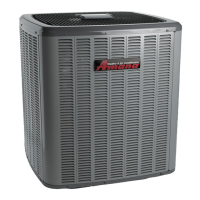


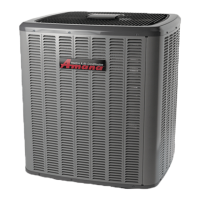




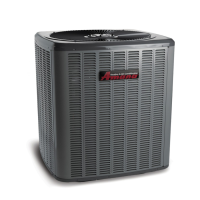

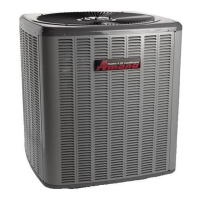
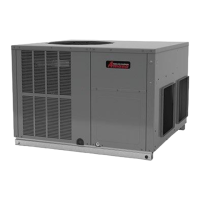
